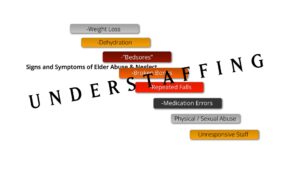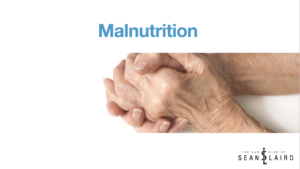Detecting Elder Neglect at Sacramento Nursing Homes & Assisted Living Facilities.
Detecting elder abuse and neglect includes spotting cavities and gum disease, because poor dental health is one of the most common forms of elder neglect. Other signs of elder abuse and neglect range from bruises to bedsores, which form when nursing home residents stay in wheelchairs or beds without shifting position.
Detecting elder abuse and neglect is a social responsibility because many seniors aren’t willing or able to report abuse on their own. Signs of elder abuse and neglect include everything from black eyes to pressure sores. One of the most common forms of elder neglect is weight loss that isn’t caused by a medical condition. When investigating signs of nursing home neglect, find out whether a facility has enough staff members to properly assist residents in eating.
Detecting elder abuse and neglect becomes easier if you know the symptoms to look for in residential care facilities. Look for signs of elder abuse and neglect that include lacerations, fractures, malnutrition, dehydration and pressure ulcers. Look for signs of understaffing, like slow response to call lights, overwhelmed or unresponsive staff.
Detecting elder abuse and neglect should be everyone’s business, and the best way to go about it is to learn the common signs of nursing home abuse and neglect.
Detecting elder abuse and neglect is difficult because the symptoms often resemble symptoms of age-related changes. For example, signs of elder abuse and neglect include malnutrition, but seniors may also lose weight naturally because of changes in their appetite or metabolism. To determine this type of elderly neglect, visit a residential care facility at mealtime. In senior facilities this neglect becomes obvious if caregivers don’t assist residents who need help eating. Also, facilities are required to track and report weight loss and are required to care plan if a resident stops eating or is losing too much weight – they neglect residents if they do not do this.
Detecting elder abuse and neglect depends on understanding the types of elder neglect and abuse. A common form of elder neglect is the failure to get nursing home residents to the restroom on time. Signs of nursing home neglect, therefore, can include a pattern of falls because frail seniors try to get up on their own. Recognizing elderly abuse and neglect requires looking behind the scenes at a nursing home or assisted living facility for understaffing which leads to neglect, which leads to these harms.





Comments are closed.